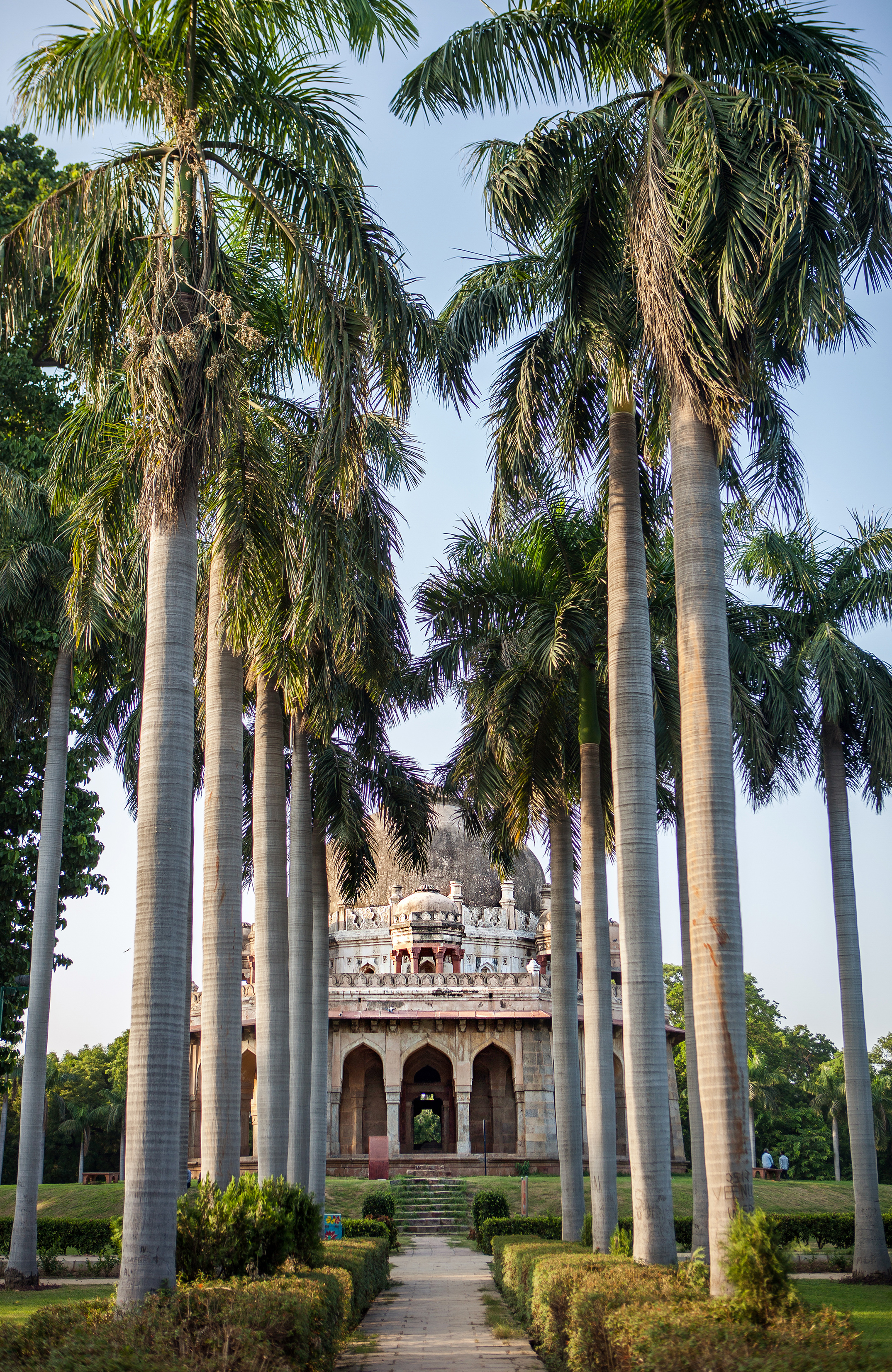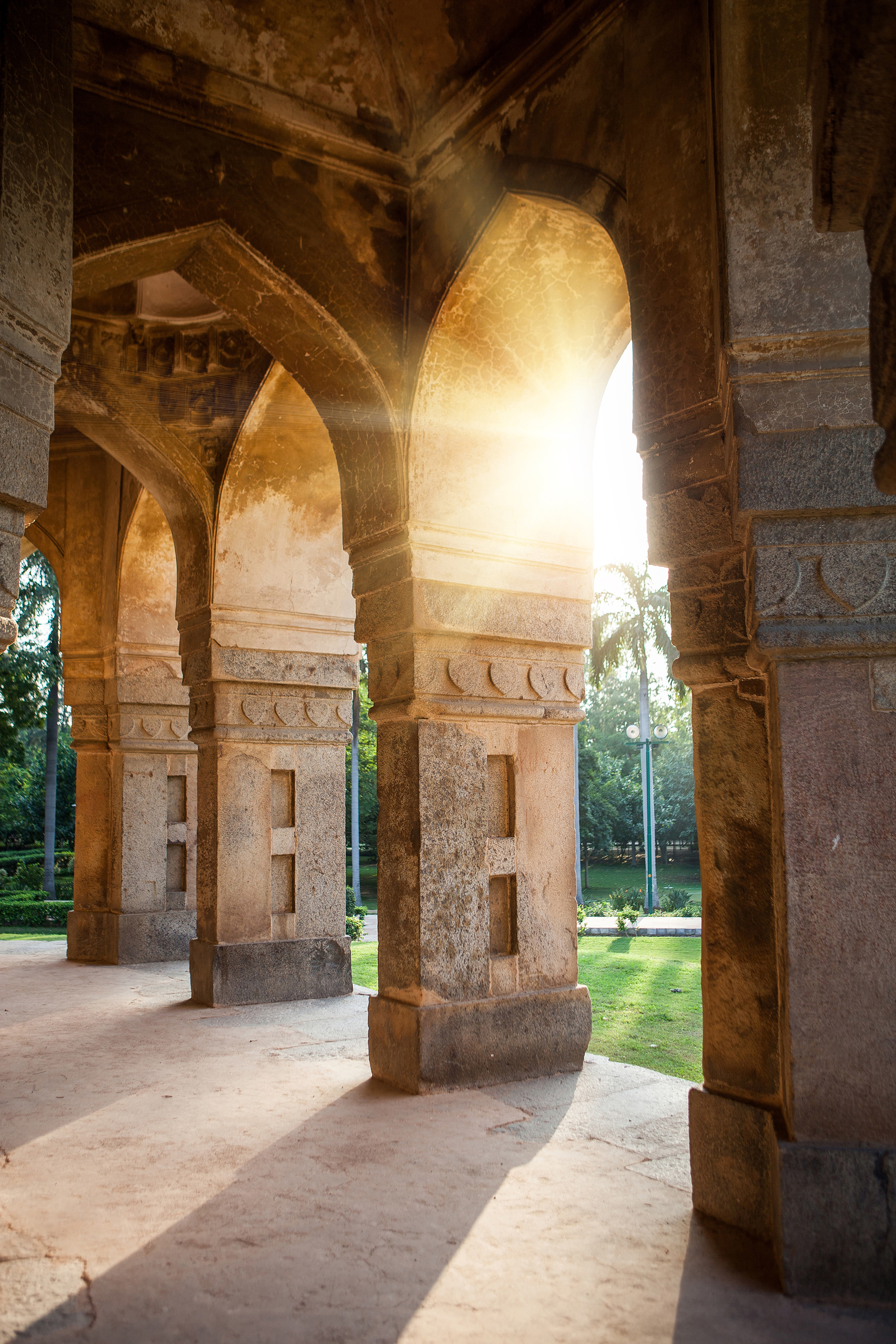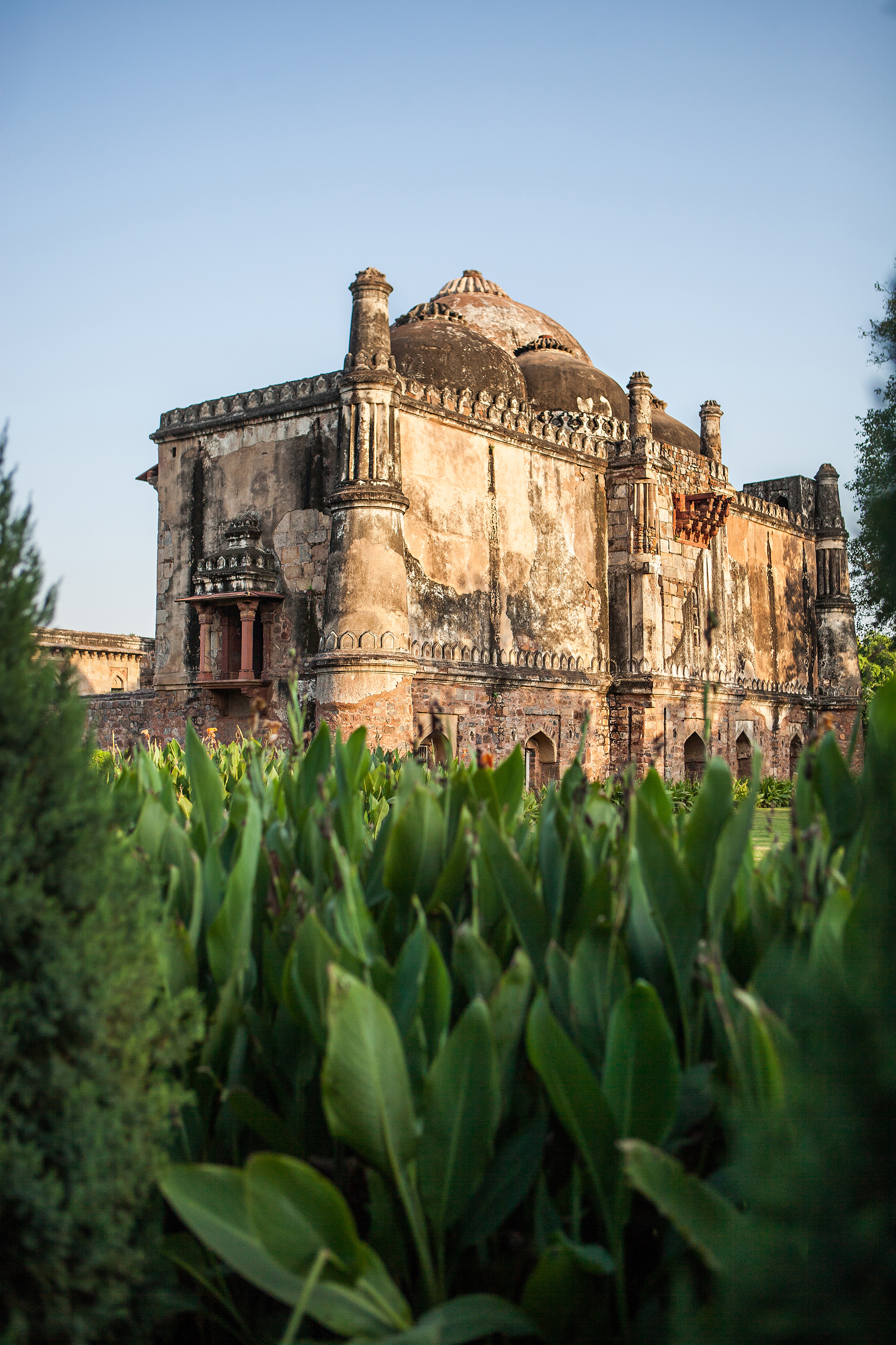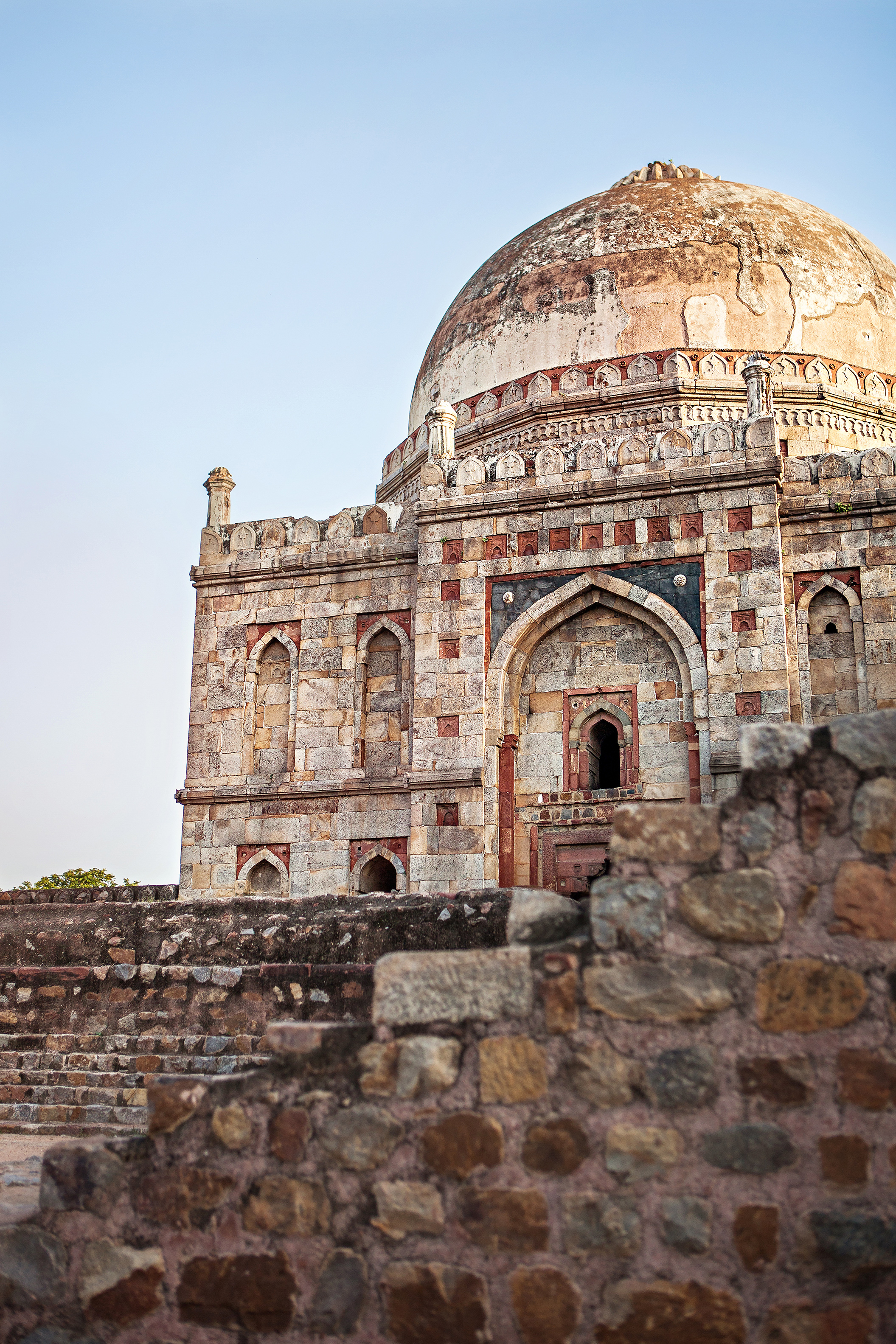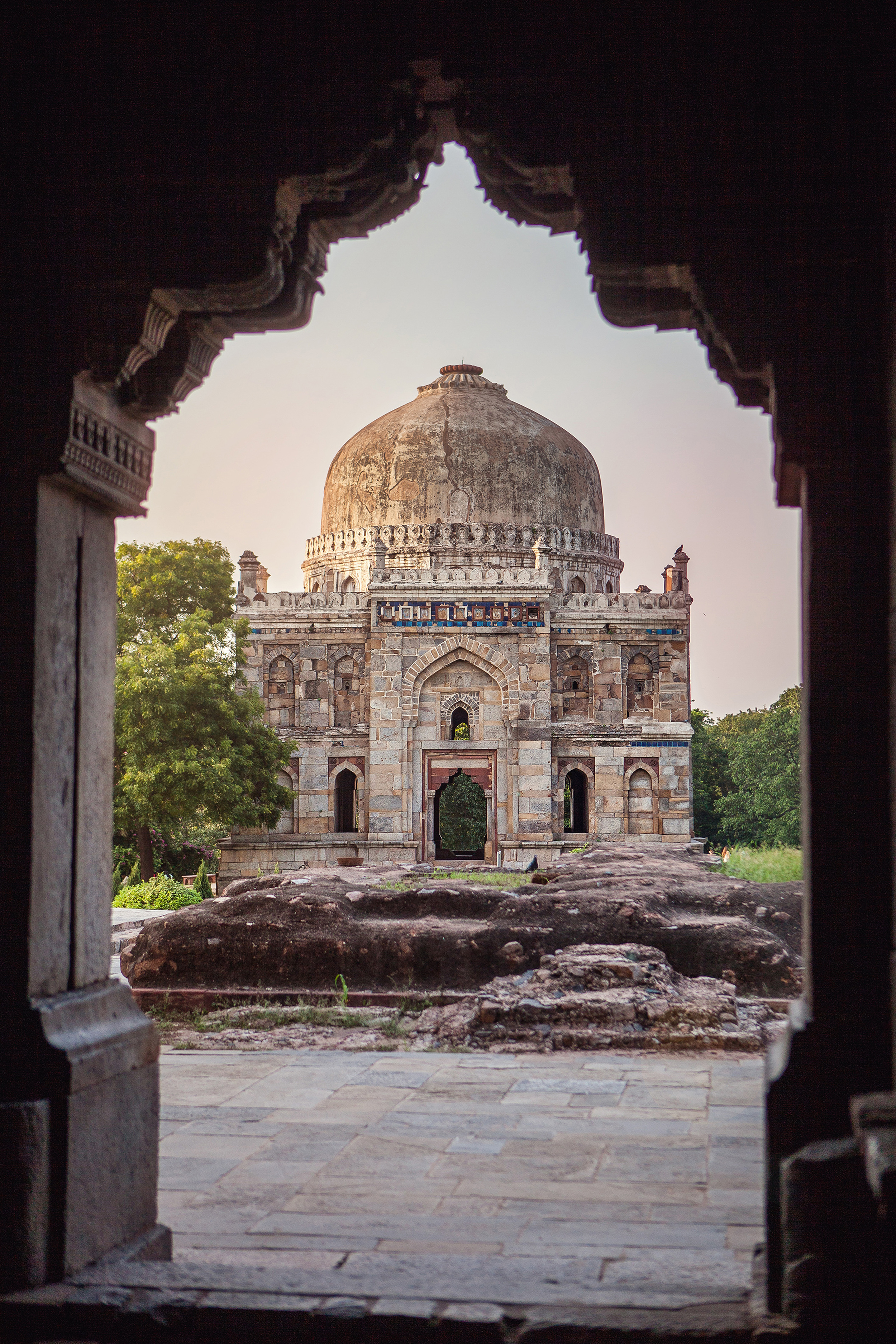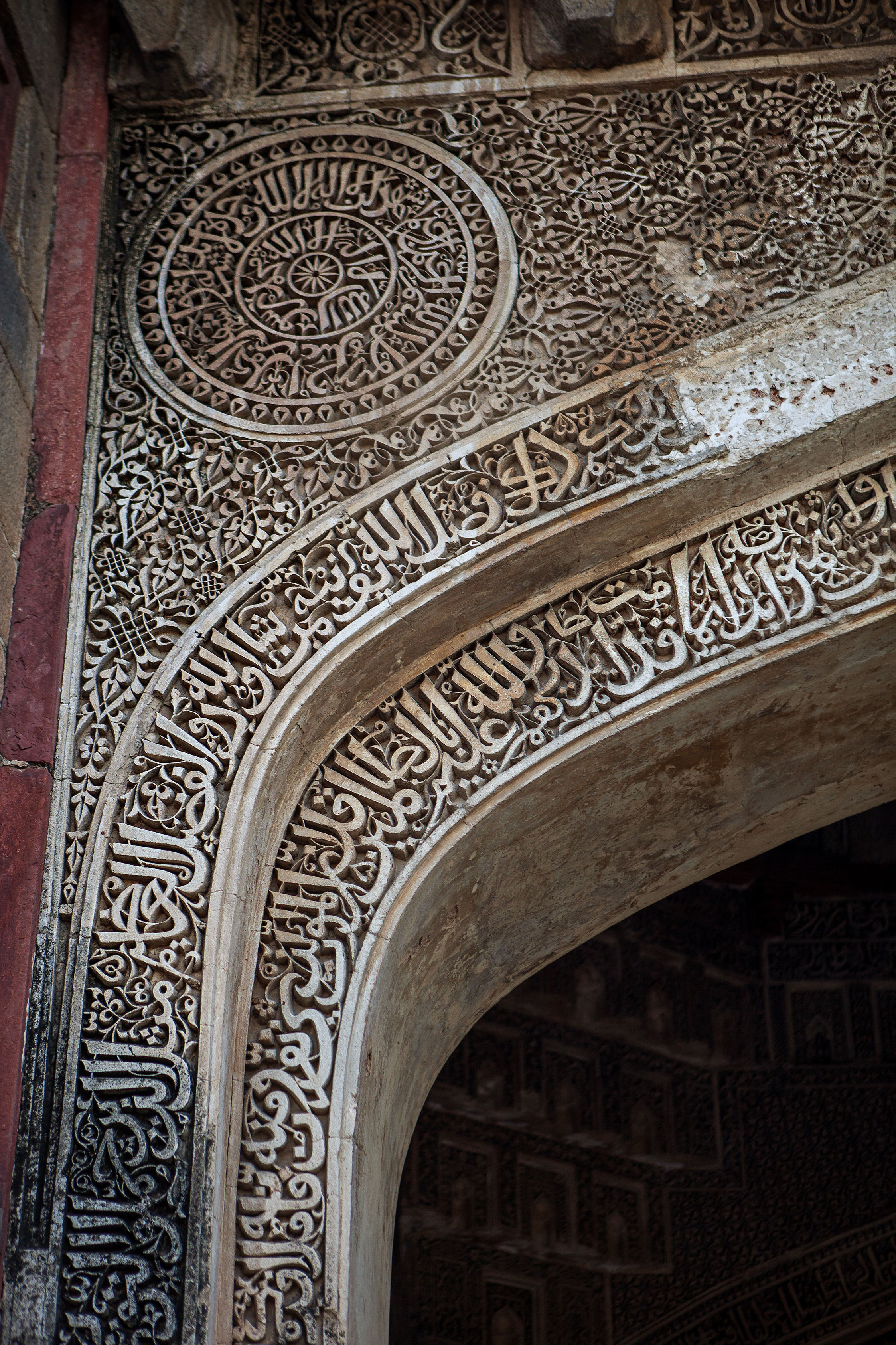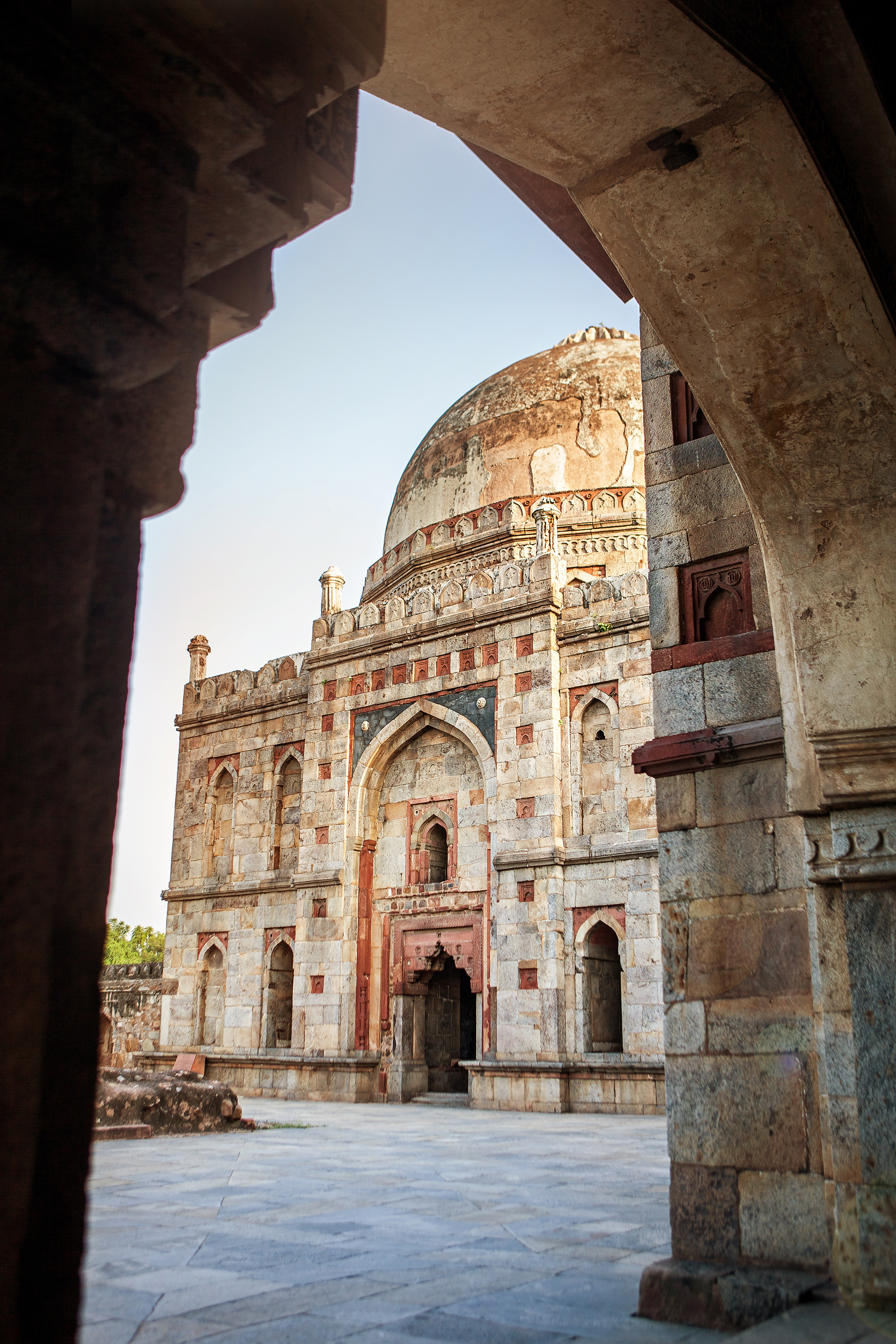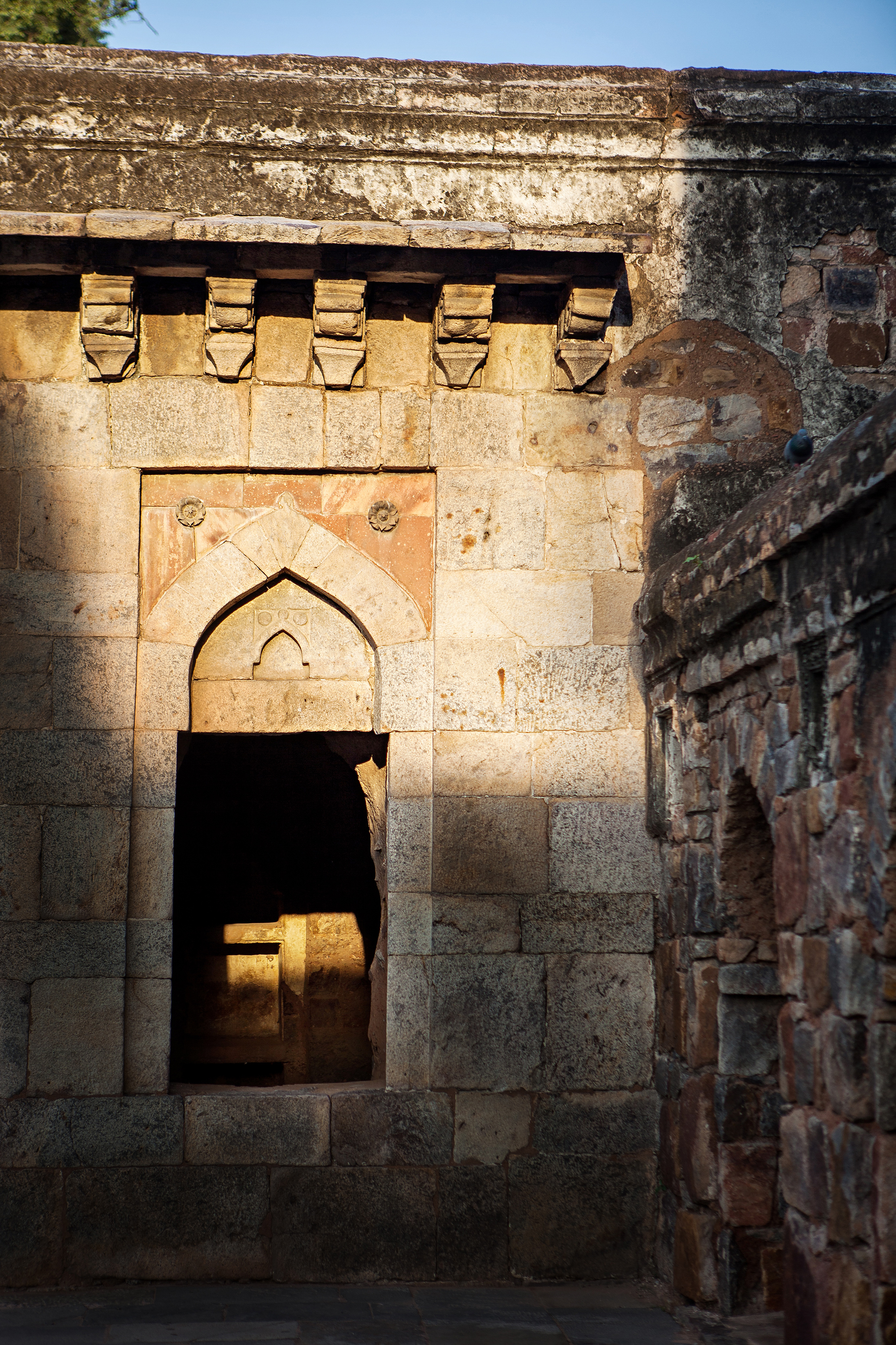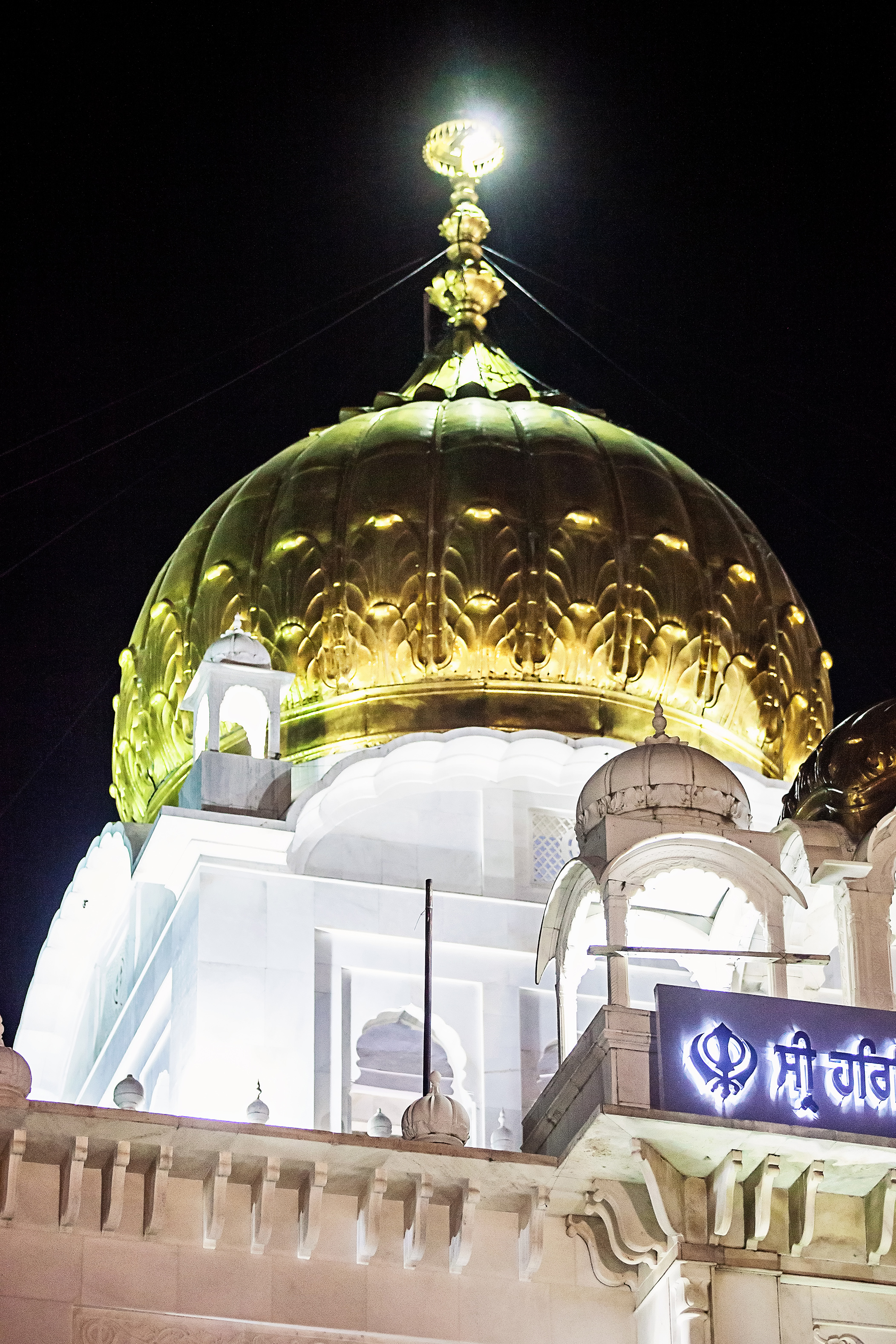Delhi In a {Half} Day
Splash. Ugh.
Reluctant to look down at precisely what I'd just stepped in, I tried not to think about the feeling of gritty ooze making it's way between my toes and instead reached down to get my enormous backpack out of the back of the cab, tugging a bit when a buckle caught in the torn seat. Justin barely managed to get out of the way as our scowling driver, cigarette dangling between cracked lips, backed the cab out of the dirt lot he'd left us standing in, the cloud of dust swirling and sticking to our sweaty faces and arms.
"This is the Old Delhi Railway Station?" I asked, looking around at the dilapidated building next to a series of open train tracks, little else in sight. There was no sign of a platform or ticketing window of any sort and the few people we saw seemed dressed to labor, not travel, wearing lungri (sarong) and traditional pagri and carrying grain sacks or other freight rather than luggage of any sort.
"Delhi's a pretty big city…maybe there's another station? Let's try to find someone to ask," Justin suggested, brows furrowed.
Looking east down the tracks, we noticed what looked to be some sort of raised walkway, so we began to make our way in that direction. As we passed the corner of the dilapidated building, we realized that this was, indeed, a train station, but nothing like we'd expected. Freight was piled high, wooden crates and frayed plastic sacking teetering precariously, and men sweating under their labors as they loaded the cargo into yawning boxcars. Under the building's overhang several dozen people lay sleeping or sitting with arms resting on bent knees, listless in the sweltering heat. As we walked, we became aware of the menacing looks turned in our direction and of the fact that we were definitely not in the right place to catch our overnight train to Pathankot. As unhappy looks turned to antagonistic stares and grumblings and the occasional overly rough shoulder jostle, we decided that the time had come to "get out of dodge." Making our way back to where our unholy cab driver had so unceremoniously left us, we sidestepped stray dogs and towering wares and tried not to fall down onto the tracks between boxcars.
We regained our dusty vacant lot and reassessed our options. We had seven hours to kill before our overnight train was due to depart. We came right to the train station after landing in Delhi simply to make sure that we had a sense of where to go rather than wandering aimlessly around an unfamiliar train station at 11:00 at night. It seemed logical at the time, but now we weren't at all sure that we were even at the right station and our general sense of unwelcome made us eager to depart. We didn't go far before we found a taxi and jumped in, ready to go.
But go where?
In our planning, we'd given thought to how to make the most of our short time in Mumbai as well as a general sense of McLeodganj, where we'd spend the next eight days. But we had utterly and completely overlooked the seven hours we had in Delhi. We had absolutely no idea what to do or where to go. Grasping at straws, we asked the driver if he knew how to get to the big arch we'd passed on our way to this train station from the airport.
"India Gate?" he asked.
"Ummm…sure!" we answered, hoping that was what it was called. Fingers crossed, we were on our way. As we pulled out of the vacant lot and onto the narrow, crowded road, we were stalled in our progress by a funeral procession. As we watched the small crowd of mourners carry their dead on a platform over their heads and throw brightly colored flowers into the air and heard their songs waft in on the dusty breeze, our tension eased and we began to reconnect to the beauty of the out-loud living that seemed to be India.
Fifteen minutes later, we were once again climbing out of a cab, grabbing our packs, and looking about us with a certain amount of embarrassing cluelessness. India Gate is situated in a park that reminded us both of our own capitol's Mall. After taking a walk around the monument, pouring sweat in the searing heat, and unsure what to do next, we began heading toward what looked like a large and impressive government building.
We were about a third of the way there when we passed an auto-rickshaw parked by the walk. As we passed, a small turbaned man hopped out and came toward us, hand outstretched and a gigantic smile on his face. This is how we came to know Mr. Dalip Singh of tuk-tuk #4001.
Mr. Singh, for the equivalent of approximately $20 USD, offered to take us to several "sights" over the next four hours as well as find us a place to eat some dinner. I imagine that what I felt in that moment is somewhat akin to winning Powerball. It was more than relief. It was pure giddiness at neither having to aimlessly wander in the heat of mid-day nor miss all of what Delhi had to offer. So in the two of us and our behemoth backpacks piled and off we went, trusting Mr. Singh to take us where he thought we should go.
We began with Gandhi Smriti (formerly known as Birla Bhavan), the site of Mahatma Gandhi's assassination. The museum and grounds were beautifully done and it was incredible to walk where this small, mighty man had once made his home.
On the way to Lodi Gardens, Mr. Singh told us about his children, a daughter who was turning ten years old that day and his fourteen-year old son. He told us how he loves to practice his English with the people who ride in his tuk-tuk and that, even though he could only attend school through grade five, he spoke the best English in his family. His pride and joyfulness were evident and he kept us regaled with stories as we zipped between honking cars and painted trucks through the streets of Delhi in our open-air tuk-tuk.
Lodi Gardens was an amazing surprise. Given our terrible planning, we gave Mr. Singh free reign to take us wherever he thought we should go, and boy-o, he didn't disappoint. The greenspace was such a treat after the exhaust and dust filled roadways and the shade offered respite from the blazing sun. We were greeted as we entered the gardens by the imposing structure of Mohammed Shah's 600-year old tomb.
From the tomb, we wandered the shaded pathway to Bara Gumbad and it's three-domed mosque with the slightly smaller Sheesh Gumbad across the pathway. Both structures were built in 1494 and we were in awe of their detail and simply stunning architectural beauty.
After soaking in the peace of Lodi Gardens, Mr. Singh took us to a little restaurant called Hot Chimney where we stuffed ourselves with two types of paneer, garlic naan, and veggie fried rice. We were two days in India and already smitten with the food. Given the time we'd spent in the gardens and over dinner, our time with Mr. Singh was drawing to a close and night had fallen. We still had several hours before we needed to once again brave the train station and we asked him where we should hang out until then. His response was not what we were expecting:
"My temple! I take you to my temple and you can stay there until it is time for your train."
So we went to his temple. And by temple, he meant the stunning Sikh Gurudwara Bangla Sahib. After saying goodbye to our precious Mr. Singh, who singlehandedly turned our day in Delhi around, we entered the Gurudwara complex. Asking some teenagers for advice on how to proceed, we were shown where to store our shoes and check our bags (I mistakenly checked my camera gear not realizing until later that I would have been okay to take a few photos!) and helped to understand that both of us were to cover our heads. We stepped through the pool of water at the base of the marble stairs and climbed up to the main pavilion, a marble-tiled courtyard where people were sitting and lounging and talking and praying while others carried offerings into the main entrance of the temple. We took a seat there as well and spent the next several hours people watching and chatting now and again with our neighbors. One family requested a photo of us holding their infant daughter, Shamu, and some brave little girls excitedly introduced themselves in English, proudly announcing their names and that "it was very nice to meet you" before collapsing in a fit of giggles and running back to their parents. We sat and conversed for some time with Mr. Buta Singh, a self-proclaimed political leader who was shocked to learn that we hadn't heard of him. He was even more shocked to discover that I was older than Justin and that we had no children (in case I thought the big ol' Italian family I married into was nosy, they have nothing on most of the Indian men we met!). He repeated three times that he himself has one daughter and two sons "and only ONE wife!" {insert hysterical laughter here after each telling}. Our hours at the Gurudwara were some of our favorite in India and it is a place I would love to return to and further explore.
A kind man from the temple helped us secure a tuk-tuk to the train station and this time we arrived at the main entrance to what was, indeed, what one might expect the Old Delhi railway station to be, complete with platforms and hard-to-understand schedules. We stepped around the people camped throughout the station and avoided the splash of the men washing in the wall basins and eventually found our train and climbed aboard to begin our overnight travel to the small village of Pathankot.
Almost ten hours later, we were approaching Pathankot.
From Pathankot, we would have merely a three hour taxi ride to McLeodganj, the mountain town we would call home for the next week!






